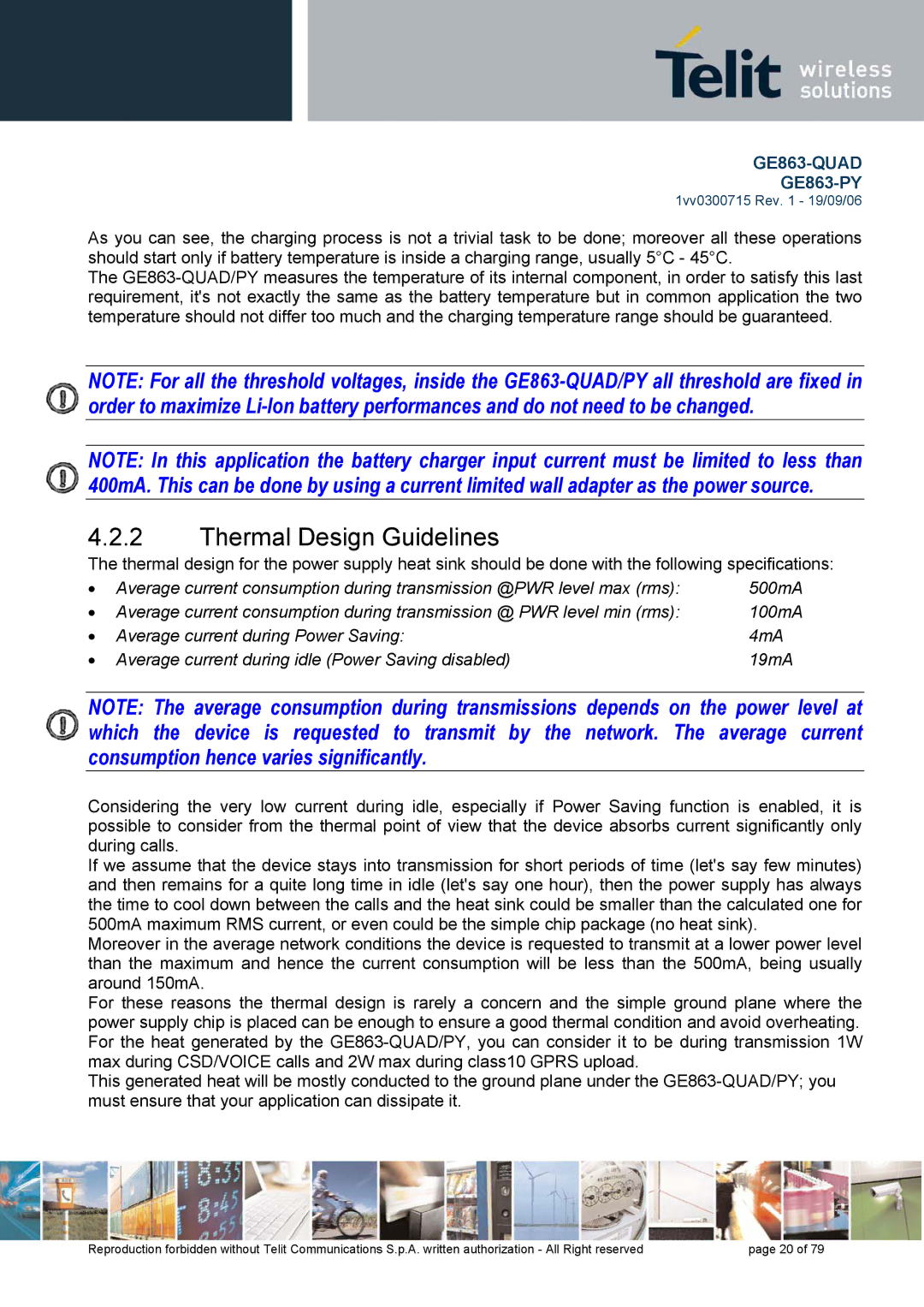
GE863-QUAD
1vv0300715 Rev. 1 - 19/09/06
As you can see, the charging process is not a trivial task to be done; moreover all these operations should start only if battery temperature is inside a charging range, usually 5°C - 45°C.
The
NOTE: For all the threshold voltages, inside the
NOTE: In this application the battery charger input current must be limited to less than 400mA. This can be done by using a current limited wall adapter as the power source.
4.2.2Thermal Design Guidelines
The thermal design for the power supply heat sink should be done with the following specifications:
• Average current consumption during transmission @PWR level max (rms): | 500mA | |
• Average current consumption during transmission @ PWR level min (rms): | 100mA | |
• | Average current during Power Saving: | 4mA |
• | Average current during idle (Power Saving disabled) | 19mA |
NOTE: The average consumption during transmissions depends on the power level at which the device is requested to transmit by the network. The average current consumption hence varies significantly.
Considering the very low current during idle, especially if Power Saving function is enabled, it is possible to consider from the thermal point of view that the device absorbs current significantly only during calls.
If we assume that the device stays into transmission for short periods of time (let's say few minutes) and then remains for a quite long time in idle (let's say one hour), then the power supply has always the time to cool down between the calls and the heat sink could be smaller than the calculated one for 500mA maximum RMS current, or even could be the simple chip package (no heat sink).
Moreover in the average network conditions the device is requested to transmit at a lower power level than the maximum and hence the current consumption will be less than the 500mA, being usually around 150mA.
For these reasons the thermal design is rarely a concern and the simple ground plane where the power supply chip is placed can be enough to ensure a good thermal condition and avoid overheating. For the heat generated by the
This generated heat will be mostly conducted to the ground plane under the
Reproduction forbidden without Telit Communications S.p.A. written authorization - All Right reserved | page 20 of 79 |
